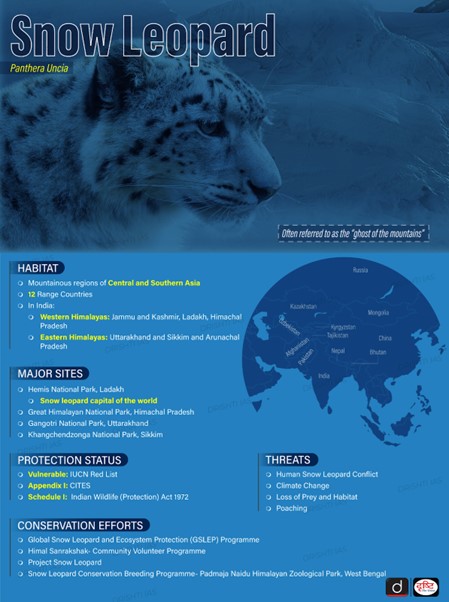Madhya Pradesh
International Snow Leopard Day and ‘#23for23’ Initiative
- 25 Oct 2025
- 2 min read
Why in News?
India celebrated International Snow Leopard Day on 23rd October 2025 with a unique nationwide campaign titled ‘#23for23’, which encouraged people to dedicate 23 minutes to physical activity in order to raise awareness about the conservation of snow leopards and their fragile high-altitude habitats.
Key Points
- About the Initiative: The campaign ‘#23for23’ was launched to symbolize 23 minutes of active participation for the year 2023, promoting awareness and public engagement in wildlife conservation.
- It was organized under the aegis of the Global Snow Leopard and Ecosystem Protection Programme (GSLEP) in collaboration with the Snow Leopard Trust Worldwide.
- India’s Conservation Achievements:
- The first-ever Snow Leopard Census conducted across the Indian Himalayas recorded 718 individual snow leopards, out of which 477 are in Ladakh.
- India has identified snow leopard as a flagship species for the high-altitude Himalayas.
- International Snow Leopard Day: It came into being in 2013, following the adoption of the Bishkek Declaration in Kyrgyzstan where 12 countries that host snow leopard populations agreed to collaborate in their conservation efforts.
- Countries Hosting Snow Leopards: Afghanistan, Bhutan, China, India, Kazakhstan, Kyrgyzstan, Mongolia, Nepal, Pakistan, Russia, Tajikistan, and Uzbekistan.
Facts About Snow Leopards (Panthera uncia)
|
 |






